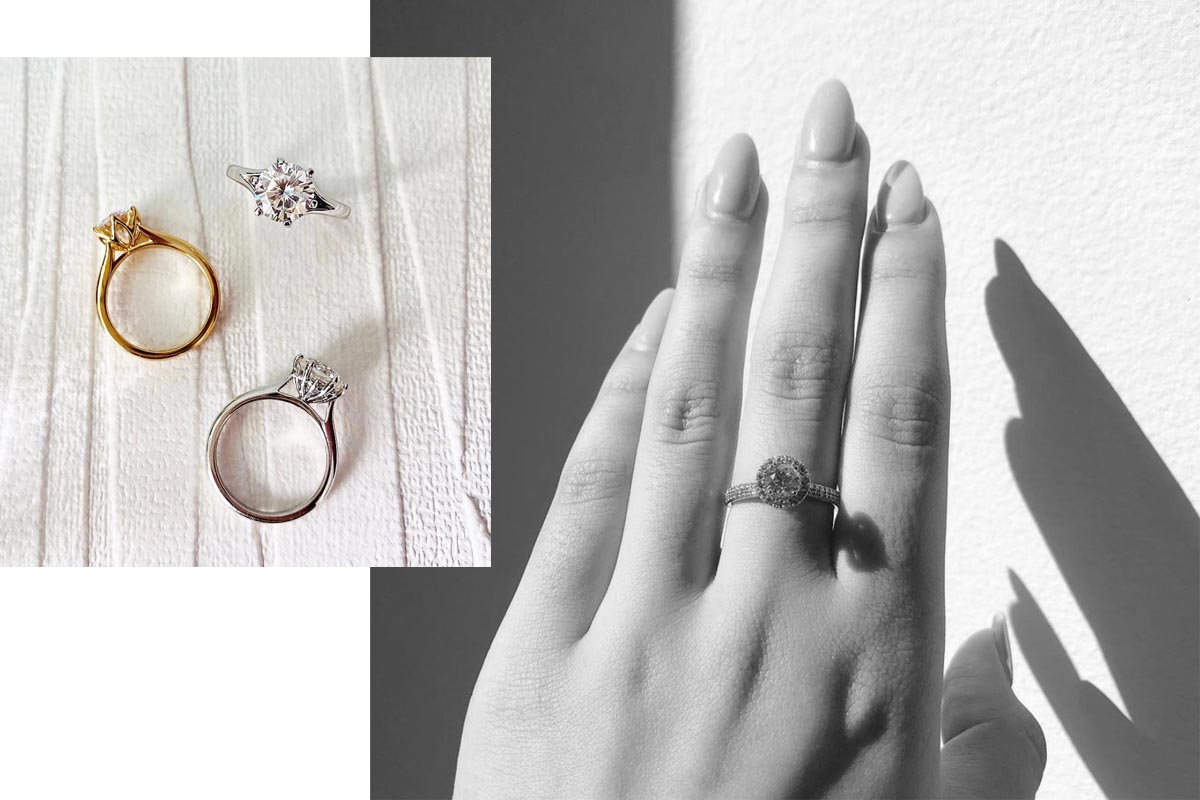
Have you ever wondered what the difference is between a lab-grown diamond and a diamond mined from the ground? There is a lot of rhetoric around the potential differences and it can be difficult to separate the marketing spin from the facts.
But the reality is, both are diamonds. Chemically and visually, both are the same. That said, there are many reasons why you might choose one over the other. Since, lab-grown diamonds do not need to be mined, they don't carry the same human and environmental impact as a mined diamond. And now many people are turning to these as a more ethical choice.
To find out more we spoke to managing director of Moi Moi, Alana Weirick. Moi Moi Fine Jewellery is dedicated to selling Moissanite and lab-grown diamonds and Alana helped clear up some misconceptions around diamonds and the diamond industry.
In layman’s terms, what is a lab-grown diamond?
Lab-grown diamonds are real diamonds. They have the same crystal structure, composition, physical and optical characteristics of mined diamonds, they are simply made in a lab instead of mined from the ground.
How do you make a diamond in a lab? Isn’t this something that ordinarily takes millions of years?
There are two ways to create a diamond in the lab. Both start with a seed of diamond (carbon) which is placed in a heavy chamber and exposed to temperatures of more than 1500C and extreme pressure. This technique is called the High Pressure and High Temperature System (HPHT).
The other and a newer technique involves putting the diamond seed in a sealed and heated chamber filled with carbon-rich gas. Under these conditions the gas begins to deposit to the seed, thereby growing the diamond seed into a bigger diamond atom by atom. This technique is called Chemical Vapor Deposition (CVD).
Growing a diamond in a lab typically takes around 2 weeks for a 1 carat and around a month for a 3 carat. It’s important not to rush the process because the crystal can fracture. The lab technicians are constantly monitoring the temperatures and pressures for the diamond to grow, therefore speeding up the process of how a diamond is made.
How does it differ from a diamond taken from the earth?
Lab-grown diamond does not differ from a mined diamond in terms of its creation and look.
In essence, the process of making lab grown diamond is the same as mined diamond, that is using extreme pressure and heat. The only difference is that one is extracted from the Earth, while the other is grown in a highly controlled environment.
The grown diamond or the mined diamond, called the rough, is cut, shaped and polished to become a sparkling diamond. These diamonds sparkle the same, have the same colour and clarity attributes and come in all sizes and shapes.
When looking at a lab-grown diamond and a mined diamond, is there any difference to the naked eye? What about under a microscope?
There is no difference visually and most jewellers are not able to tell them apart. Most lab-grown diamonds are certified in 0.50ct and above to protect consumers, and so you can identify lab-grown diamonds by the inscription on the girdle which corresponds to a certificate. Without an inscription the only way is to send it to a gemmological laboratory that uses sophisticated devices to determine the difference.
What are the benefits of choosing a lab-grown diamond?
Lab-grown diamonds are more environmentally friendly and are an ethical alternative to mined diamonds. Whilst electricity is used in growing a diamond, its consumption is insignificant. They do not negatively impact the environment compared to mining a diamond. Choosing a lab-grown diamond not only helps to minimise your environmental footprint but offers a conflict-free diamond with a guaranteed source of origin. LAVANA Lab-grown diamonds are also much more affordable and are typically 50%-70% less than mined diamonds, while pink lab grown diamonds are 90% less!
Are there ethical reasons why someone would prefer a lab-grown diamond?
Definitely! Environmentally conscious consumers don’t want to be associated with mined diamonds at all due to their complicated history and association with conflict or blood diamonds. Blood diamonds are diamonds mined in a war zone, used to finance rebel militia, buy arms and intensify civil wars, all under inhumane conditions for the miners. Diamond mining that has fuelled civil wars has resulted in a lot of death, displacement and destruction in these countries. These diamonds get disbursed around the world for sale and are not traceable, so consumers don’t know if they are purchasing a blood diamond or not.
One of the main benefits of choosing a lab-grown diamond is the controlled environment will always ensure you are buying a conflict free stone that has a guaranteed source of origin.
What do you think is the biggest misconception about lab-grown diamonds?
The biggest misconception is that they are not real diamonds. However, the fact is that The US Federal Trade Commission (FTC), the leading US consumer body, has ruled in 2018 that a diamond is a diamond no matter the origin.
What is something you wish more people knew about the diamond industry?
You now have more options.
This is great news because it means that you have the freedom to choose a bigger, higher quality diamond within your budget or use your savings for other important things like your home or honeymoon. Lab-grown diamonds even have fewer impurities than mined diamonds, making them a superior purchase for your engagement ring.
With the savings lab-grown diamonds offer, you can often buy an even more desirable diamond within your budget. One that is whiter with a higher clarity, for an even more beautiful jewel.



